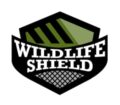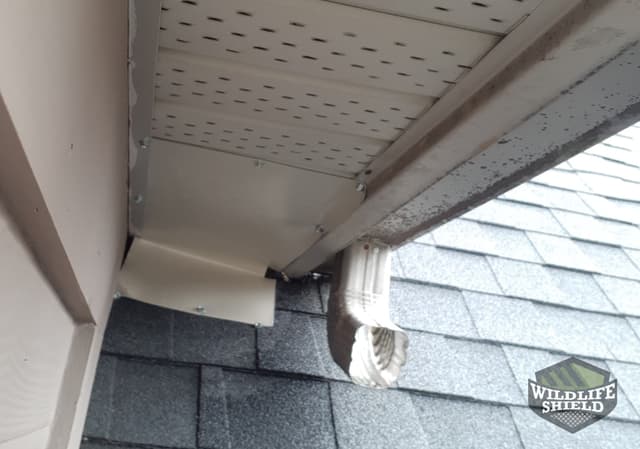The following case study recounts the removal and exclusion of a raccoon who had broken into a Mississauga home in the fall of 2020. The raccoon in this case was found nesting in the attic, having broken a soffit in the roof to get inside. To remove it, a member of the Raccoon Control team first inspected the property, then used a one-way door to evict the animal safely. Potential entry points were also reinforced to help prevent anything like this from happening again. If you are interested in raccoon-proofing your property, or if you suspect an infestation in your home, call Raccoon Control: 647-557-7932.
Exterior Inspection
The homeowners in this case reported loud noises coming from the attic regularly at night. Based on the time of the day the noises were heard, the technicians already suspected that a raccoon was hard at work. This corresponds to the behaviour we often see in raccoons – since they are nocturnal, they are most active at nighttime and usually inactive during the day. A technician promptly arrived on the scene and went on to conduct an exterior inspection with the help of a ladder and safety harness.
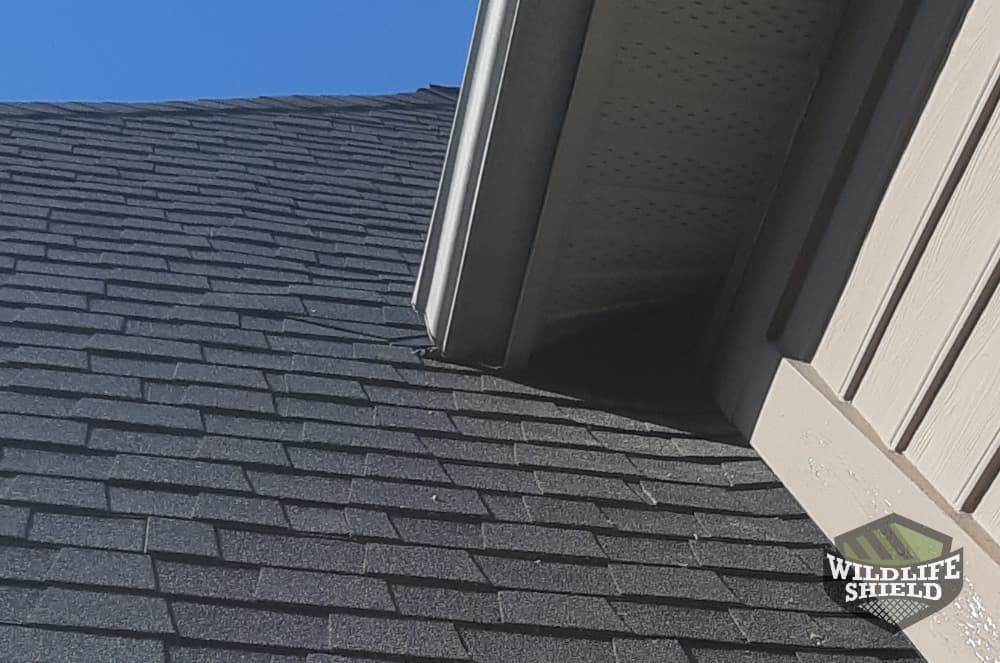
During the exterior inspection, our technicians take note of weak spots and invasion-prone areas. These include vulnerabilities like gaps in the roof’s edge, broken soffits, and open ventilation. This is then presented to the homeowner who can choose to follow up on our recommendations, such as the installation of wildlife-proof mesh. These recommendations are urged because it guarantees a defense against unwanted, repeated intrusions from rodents and wildlife alike, looking for a warm and safe space during the colder months.
The technician on-site found the raccoon’s entry-point at an intersection where the soffits and the shingles of the roof meet. Raccoons frequently break into attics at this juncture by climbing up the slope of the roof and pushing the soffit up.
Eviction and Exclusion
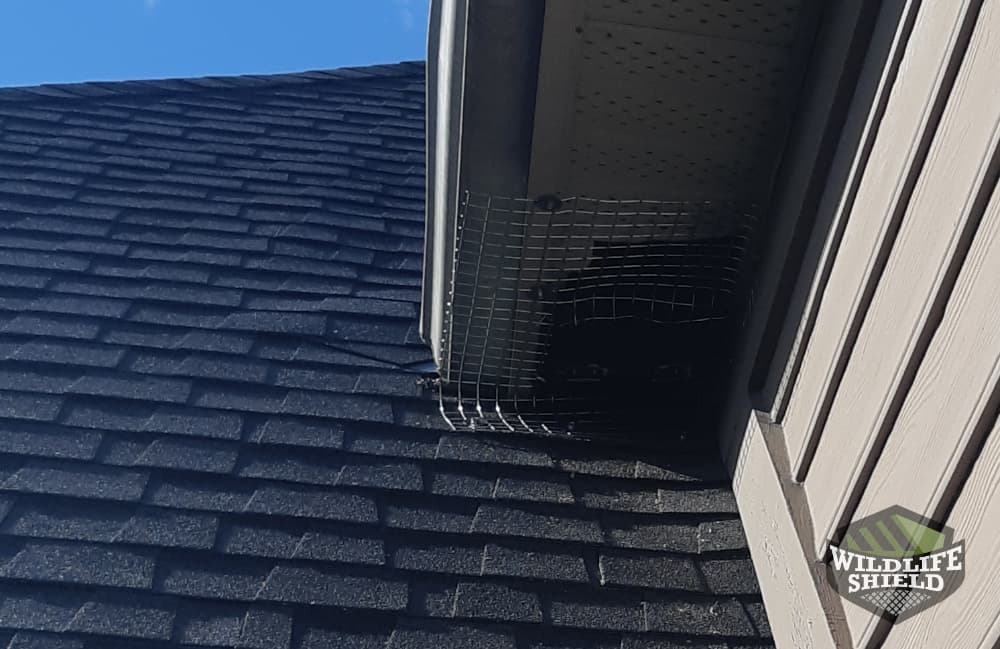
Once the entry point was confirmed, the technician installed a one-way door to it with washers and bolts. The one-way door consists of a hard plastic flap that allows raccoons to pass through but does not let them back in, essentially locking the animals out of the house. Once evicted, the raccoon would leave the area and find a new home elsewhere. This process requires some patience as it usually takes between 7 and 10 days, depending on the weather’s conditions. The raccoon, however, would have to leave the attic soon for food.
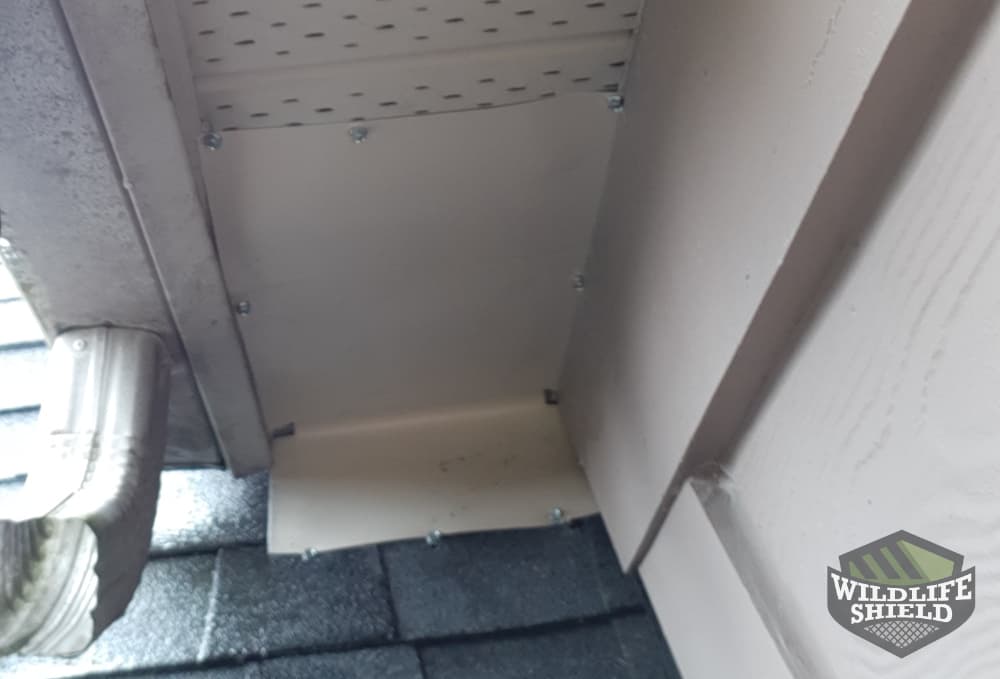
Two weeks later, as predicted, the homeowners reported that they were no longer hearing any raccoon activity. A technician then returned to the site and removed the one-way door. The hole it had left behind was then sealed with metal flashing to prevent a second break-in.
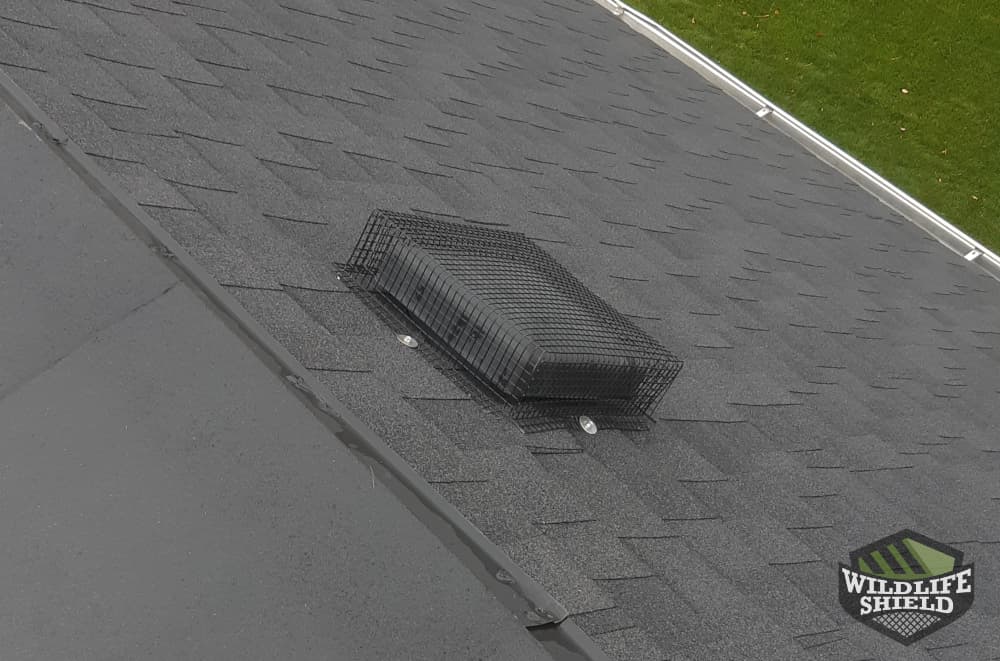
During this visit, the weak spots that were identified during the initial inspection were protected as well. Multiple roof vents were protected with galvanized steel mesh covers to prevent rodents and wildlife from entering the attic. This is a flexible, durable, and rust-proof material that can withstand the fiercest attempts at seeking access to the interior of the house. The reason roof vents are identified as weak spots is because rodents can gnaw through their plastic materials, creating openings. Similarly, the soffits were reinforced with metal flashing. This would prevent raccoons and squirrels from breaking in.
Conclusion
This case was a perfect example of the many break-ins we see in the Greater Toronto Area. Raccoons often break into attics, sheds, and porches in the colder winter months, looking for a warm place to stay out the cold. This case in particular was a success due to the cooperation of the homeowners who agreed to implement the technician’s recommendations. Excluding the home from wildlife will safeguard this house against any second attempts at a break-in. Call Raccoon Control today (647-557-7932) if you suspect an invasion of wildlife on your property.
